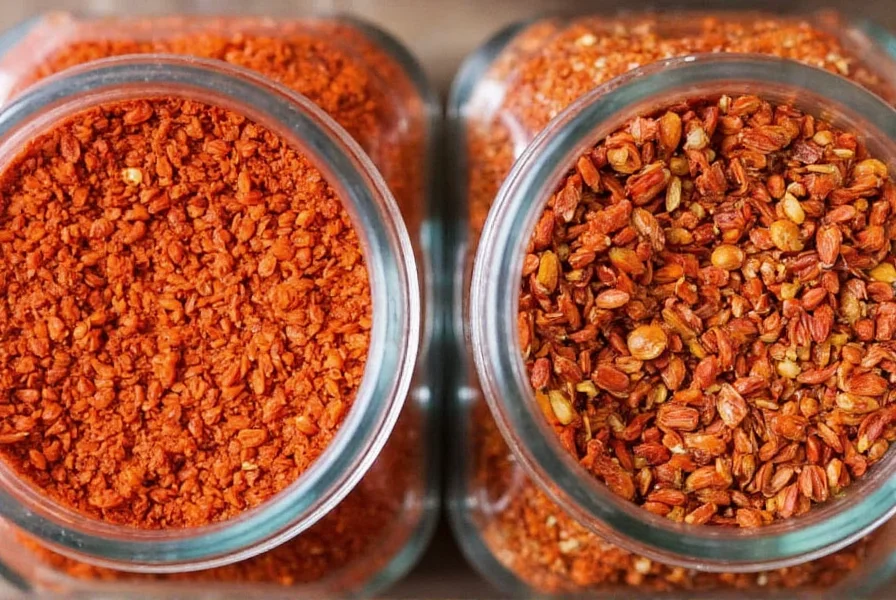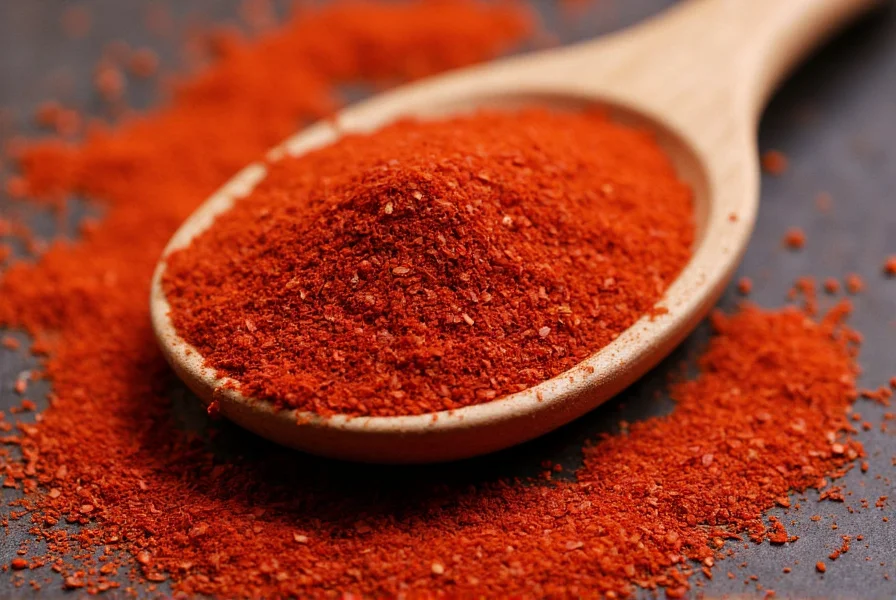When you're standing in the spice aisle or following a recipe that calls for one but you only have the other, understanding the relationship between crushed red pepper and chili flakes becomes crucial. This confusion stems from inconsistent labeling practices across brands and regions, but the reality is simpler than many cooks believe.
Defining the Terms: What Exactly Are We Talking About?
The terms crushed red pepper and chili flakes (also commonly called red pepper flakes) refer to the same basic product: dried, broken pieces of hot chili peppers. Despite the different names, they're produced through nearly identical processes. Manufacturers harvest ripe red chili peppers (typically cayenne varieties), dry them thoroughly, and then crush them into small flakes.
Unlike chili powder, which is a fine powder often blended with other spices like cumin and garlic powder, both crushed red pepper and chili flakes maintain a flaky, coarse texture that provides visible specks of heat in dishes. This texture difference is why many chefs prefer them over powdered alternatives when visual appeal matters.
| Characteristic | Crushed Red Pepper | Chili Flakes |
|---|---|---|
| Primary Ingredients | Dried cayenne peppers | Dried cayenne peppers |
| Texture | Slightly more uniform flakes | May contain varying flake sizes |
| Heat Level (Scoville) | 30,000-50,000 SHU | 30,000-50,000 SHU |
| Common Regional Names | Primarily US East Coast | US West Coast, international |
| Additional Ingredients | Rarely contains additives | Occasionally includes other chili varieties |
Why the Confusion Exists
The primary reason for the naming confusion between crushed red pepper and chili flakes lies in regional marketing practices rather than actual product differences. On the East Coast of the United States, grocery stores and recipes typically use the term crushed red pepper, while the West Coast and international markets favor chili flakes or red pepper flakes.
Food manufacturers capitalize on these regional preferences, labeling identical products differently based on their target market. A single production batch might be packaged with "crushed red pepper" labels for shipment to New York and "chili flakes" labels for California, despite containing the exact same contents.

Practical Cooking Implications
When considering whether you can substitute crushed red pepper for chili flakes (or vice versa) in recipes, the answer is almost always yes. The minor differences that might exist between specific brands won't significantly impact most dishes. However, there are a few culinary considerations worth noting:
- Texture consistency: Some crushed red pepper products undergo additional sifting to create more uniform flake sizes, which might affect how evenly the heat distributes in delicate sauces
- Heat variation: Natural variations between chili harvests can cause slight heat differences between batches, regardless of what they're called
- Additional ingredients: Rarely, some "chili flake" products might contain a blend of chili varieties beyond just cayenne, potentially creating subtle flavor nuances
For most home cooking applications—from pizza seasoning to pasta arrabbiata to homemade hot sauce—the substitution works perfectly. The 1:1 replacement ratio applies in virtually all cases, though you should always taste as you go when adjusting heat levels.
When the Distinction Might Matter
While crushed red pepper and chili flakes are functionally identical for 95% of cooking applications, there are niche scenarios where attention to labeling might be worthwhile:
Professional chefs developing precise recipes for publication might specify one term over the other to maintain consistency with regional expectations. Some artisanal producers create specialty blends labeled as "chili flakes" that incorporate multiple chili varieties (like a mix of cayenne, jalapeño, and habanero), which would differ from standard crushed red pepper made purely from cayenne peppers.
When following traditional Italian recipes, you'll typically encounter references to "red pepper flakes" rather than crushed red pepper, reflecting the West Coast terminology preference. Similarly, commercial food manufacturers often standardize on one term for consistency across their product lines.

Shopping Tips for Confident Selection
To ensure you're getting what you expect regardless of the label, follow these practical shopping guidelines:
- Check the ingredient list: Both should list only "dried red chili peppers" or similar. Avoid products with added salt, anti-caking agents, or other spices if you want pure heat
- Examine the texture: Hold the container up to light to assess flake size and consistency before purchasing
- Consider your recipe's needs: For dishes where visual presentation matters (like garnishing pizza), more uniform crushed red pepper might be preferable
- Trust your nose: Fresh product should have a vibrant, slightly fruity aroma—not musty or stale
Proper storage extends shelf life significantly. Keep your crushed red pepper or chili flakes in an airtight container away from light and heat. When stored properly, they maintain optimal flavor and heat for 1-2 years, though they remain safe to consume indefinitely (with gradually diminishing potency).
Global Perspectives on the Terminology
The naming confusion isn't limited to American English. In British English, the term "chilli flakes" predominates, while Australian markets use both "chilli flakes" and "cracked chilli." Italian recipes typically reference "peperoncino" (small peppers) rather than using the English terms. This international variation further complicates the question of whether crushed red pepper is the same as chili flakes.
Professional culinary institutions like Le Cordon Bleu and the Culinary Institute of America teach that these terms are functionally synonymous in kitchen practice, emphasizing that the physical product matters more than the label. Food science research confirms that the chemical composition and capsaicin content (the compound responsible for heat) are identical across products regardless of which name appears on the container.











 浙公网安备
33010002000092号
浙公网安备
33010002000092号 浙B2-20120091-4
浙B2-20120091-4